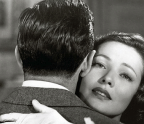The Original Ballad

Elle Perez: I teach The Ballad every semester. And I create this fake slideshow for my students. I’ve scanned the entirety of the book. We put it up on the screen, and we play it in the dark, and I use a playlist for the music.
Marvin Heiferman: Oh, you kind of re-create it. That’s hilarious.
EP: It goes from Maria Callas to James Brown, and then—what’s that one song that’s like, “Kiss the girl”…?
MH: “Miss the Girl.”
EP: Yes. So we sit there for forty-five minutes and watch it.
MH: The Ballad as a slideshow is so different from the experience of The Ballad as a book. Part of it is the power of the audio and the sort of trance state you get pulled into when you watch it, and listen to it.
EP: The color washes over you in such a different way than when you’re looking at it in the book. When it’s illuminated on a screen, you feel like you’re watching something that has to do with the sequence of the book, which is very romantic.
MH: Romance is not a bad word to use. That’s certainly part of the allure of The Ballad. I don’t look at the book all that often, because I know it all too well. But looking at this new edition, it’s truer to the color and the experience of Nan’s slides in terms of that richness, which has a lot to do with what it takes to move people through The Ballad as a slideshow and as a book.
EP: How did you get involved in working with Nan? How did you even meet?
: I was working at Castelli Graphics and running the photography program there. On the one hand, I was working with people like Lewis Baltz, Robert Adams, John Gossage, Ralph Gibson, and Mary Ellen Mark. And on the other, I was continually
You’re reading a preview, subscribe to read more.
Start your free 30 days





